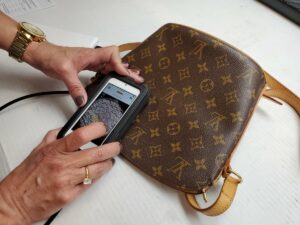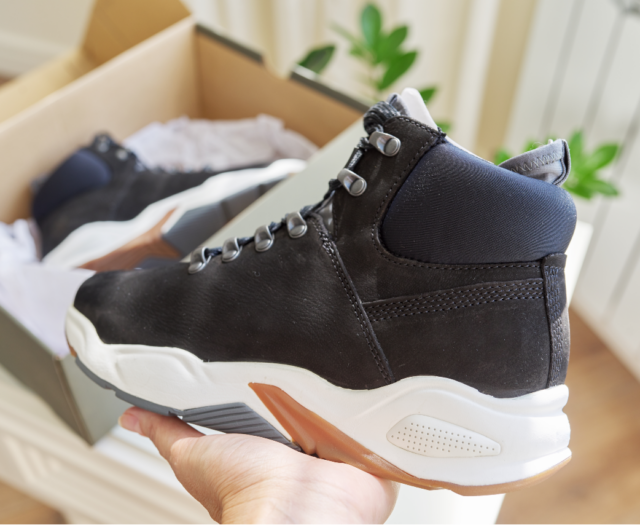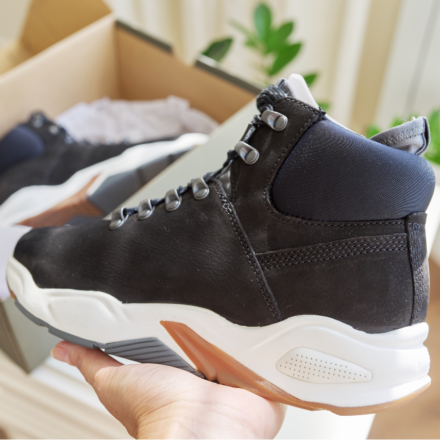Fraudulent luxury goods are a booming business—and duped customers or brands aren’t the only ones losing out. Consumer safety risks, job losses, child labor—these are some of the consequences unleashed by the tidal wave of the counterfeit trade, affecting both the economy and society at large.
A report by European Union Intellectual Property Office (EUIPO) and Organisation for Economic Co-operation and Development (OECD) estimated the international trade in counterfeit and pirated products at $461 billion in 2019, or 3.3% of the world trade. The magnitude of the problem sounds too immense even for entire industries to solve. But what if artificial intelligence (AI) came into play? After all, that’s what AI does—it solves problems too great for the human mind.
New York-based technology startup Entrupy wants to take at least a small bite out of the problem with the help of AI and other technology. The way Entrupy CEO Vidyuth Srinivasan sees it, counterfeiting causes so much disruption across society that it’s worth fighting, even on a small scale.
“The idea behind Entrupy is to promote trust in transactions,” Srinivasan says. “The more you move toward creating that trust, the less of an opportunity you provide counterfeit goods from entering the regular commerce space.”
Promoting trust one pair of sneakers at a time
Footwear tops the global trade of counterfeit goods, comprising about a fifth of the value of seized fakes, according to the EUIPO/OECD report. But for Srinivasan and his co-founders, it’s not about numbers. Growing up in India, they experienced the problem first-hand as kids—having to wear “cheap copies” of school-issued shoes, saving the authentic pair for special occasions.

“As a kid, you don’t think much about it, but as a grown-up, you realize how much impact it has,” Srinivasan says.
Entrupy’s own research shows the magnitude of the problem even bigger than the EUIPO/OECD numbers. The company estimates the international counterfeit trade to cost nearly a trillion dollars, leading to 100 hours per week in labor exploitation and $2.4 million in sales a day funding organized crime.
“We looked at the counterfeit industry from the perspective of how can we break the cycle and always stay two to three steps ahead of the counterfeiters,” Srinivasan explains. “A lot of technologies are being used to reduce the level of counterfeiting or detect it, but they’re usually one generation behind.”
Fake sneakers are not unlike any other challenge that requires getting ahead of the fraudsters. These actors are prolific and agile, catching up quickly to new authentication security measures. And they produce large volumes of knockoffs almost as fast as new sneaker styles drop on the market.
“We needed to provide such a high level of security that it becomes harder and harder for counterfeiters, and they need to spend more and more money to make those products,” Srinivasan says. “We zeroed in on a specific set of problems and then developed the toolsets for them.”
Computer vision meets machine learning and digital fingerprinting
The company’s recently released solution, Entrupy Sneaker Authentication, is an AI-powered authentication platform geared primarily to the second-hand market such as resale retailers, pawn shops and online marketplaces.
It has two components: a mobile app for scanning tag data and displaying the authentication results, and a lightbox that uses computer vision with eight cameras capturing multiple angles for each shoe. (A field of AI, computer vision enables computer systems to understand the objects and people in visual inputs such as video and images.)
Machine learning (ML) algorithms then analyze the captured data and compare it to data points from authentic pairs—and can issue an authentication verdict in as little as one minute. Entrupy has collected millions of images per brand after sourcing both authentic and fake products.
Due to nondisclosure agreements, Srinivasan can’t share full adoption numbers since the recent launch of Entrupy Sneaker Authentication, but says that in the open market, which includes small and medium businesses, the technology has authenticated 5,000 items as of late October.
The idea behind Entrupy is to promote trust in transactions. The more you move toward creating that trust, the less of an opportunity you provide counterfeit goods from entering the regular commerce space.
—Vidyuth Srinivasan, CEO of Entrupy
The sneaker authentication follows on the heels of the company’s first solution, which authenticates luxury handbags using the same underlying technology. Computer vision is also a component of Entrupy’s fingerprinting technology, which verifies the authenticity of a specific item that’s been previously registered in the database.
The fingerprinting, which doesn’t require a box, solves a different problem: return fraud. In 2020 alone, fraudulent returns cost U.S. retailers $25.3 billion (comprising about 6% of returns), estimates a report by the National Retail Federation and Appriss Retail.

Entrupy’s fingerprinting technology primarily addresses a type of fraudulent returns known as “switch” fraud—when someone purchases an item and then returns another of lower value (such as a broken model or a counterfeit item). Merchants scan a high-value item with a smartphone app to register it as the original product. When a customer returns the item, the merchant scans it again. Computer vision then compares all the unique points, pixel by pixel, of the new image against the original one and decides if there’s a match.
“The microscopic fingerprinting uniquely identifies a specific item rather than identifying if this is a real Rolex or a real Louis Vuitton,” Srinivasan says.
As with any AI technology, Entrupy Sneaker Authentication has to work through some challenges, such as AI bias and accuracy. That’s why Entrupy doesn’t release support for a new brand until it has enough data to support a qualitative assessment of above 90% accuracy—and why the company is continuously improving its algorithms.
“Curating data to make sure we have enough and to get to really high accuracy levels can be a challenge sometimes, and we’re very realistic about what it takes to get there,” Srinivasan says. “But on the flip side, the combination of AI and fingerprinting provides the best possible solution to constantly be ahead of counterfeiters.”
Breaking the cycle
Entrupy’s combination of authentication and fingerprinting is unique in the market, according to Srinivasan, but it is not the only company trying to solve the problem of counterfeit goods. GOAT, for example, also uses ML for authentication, but instead of offering its solution to brands and resellers directly, it serves as an intermediary between sellers and buyers and provides an online marketplace. Another company, Arylla, has developed invisible ink for tagging products.
Srinivasan says most solutions cater to the manufacturers rather than resellers, and that’s a space where Entrupy sees a pressing need. Indeed, forecasts show that the resale market, valued at $28 billion in 2020, is expected to grow to $64 billion by 2025—and has grown 25 times faster than overall retail in recent years.
Even in the crowded authentication market, Srinivan is realistic that no individual company can solve the problem. “The entire industry needs to come together, and even multiple industries,” he says.
Lead photo courtesy of Shutterstock

